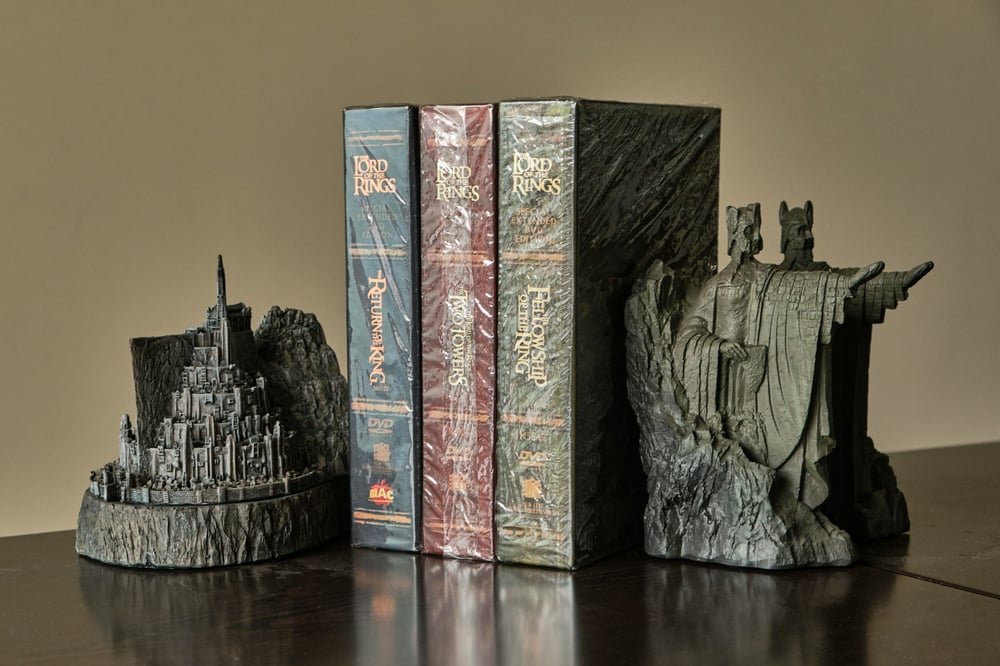The Character Development Worksheet You’ve Been Looking For

Can there really be a character development worksheet that does it all?
A guide that helps you design complex characters that are both relatable and unique? A fillable PDF that allows you to envision your character as a singular being while also shaping the essential connection between who they are and the story they’re in?
Why, yes. It is possible. In fact, you’ve just found it.
We created our character development worksheet to help you build characters who are not only compelling, but also essential to your story. They create a living context for your theme. They complicate the conflict simply by being themselves.
They demand to be read.
You can download the worksheet right here and get crackin’. Or you can keep reading for a quick rundown on how to use this tool and develop fascinating characters.
If you’re sticking around, let’s jump in.
How to Use a Character Development Worksheet
The goal of a character development worksheet is to help you:
- Get to know your characters on a deeper level
- Better understand their role in your story
Use a character development worksheet anytime you need to do both or either of those things. That might mean diving into the worksheet while you plan your novel for the very first time. Or it might mean pulling it out as you flesh-out side characters during revisions.
Your process is your process.
That said, I recommend filling out the entire character development worksheet, even if you don’t do it all in one sitting. Unlike character interview questions, which tend to be a “use what you can, leave what you can’t” situation, this character development worksheet focuses only on the must-knows.
Finally, this character development worksheet is a fillable PDF, so you can fill it out right on your computer. But you can also print it out and write on it or even put your answers somewhere else entirely. (*cough* Dabble Character Notes *cough*) Again, it’s your process.
Now, let’s take a closer look at what’s on this worksheet.

A Guide to Character Development
Following this guide, you’ll gradually add layers to your character—layers that help you not only design a more complex being but also tell a better story.
There is a logical flow to the order we’ve laid out for you, but feel free to jump around if our flow does not match your flow.
Let’s get to it.
Step One: First Impressions
Right now, your character is probably like a stranger in a coffee shop.
You’re looking at them with great curiosity, trying to piece together who they are based on the way they look, speak, and move through the world. You’ve made a few vague conclusions, but you don’t really know their soul yet. Based on the “Chorly” scrawled on their coffee cup, you think their name is probably Charlie.
Start by nailing down the foggy details you currently know (or think you know) and build from there.
- Name:
- Age:
- Location: Where do they live, work, and play?
- Time: Where are they in time?
- Archetype or Personality Type: Character archetypes and defined personality types like Enneagrams can be extremely helpful in character development. These are not cookie-cutter character templates. Rather, they provide psychological and emotional frameworks for developing relatable characters while still giving you a ton of room to experiment. Now is a great time to consider what your character’s type might be.
- General Personality Notes: What other first impressions do you have about your character?

Step Two: Build Your Character’s Backstory
The next step is to build a backstory for your character. What experiences have shaped who your character is on page one?
Now, I’m calling this the “next step,” but if you already have a strong grasp on the central conflict of your story, you might want to swap steps two and three. That allows you to build your character from the conflict.
But if you’re the type who likes to discover the conflict within the character, you’re good here. Stay put and start building out these details:
- Upbringing: Where did your character grow up? What were the values of their culture? And what about the values of their family? Was their childhood home a place of love and security? How were they expected to behave? Who were they expected to become?
- Family Relationships: Take time to think through all the family members who might have had a powerful influence on your character, positive or negative. Even if those characters are no longer around when the story begins, write about those relationships.
- Friendships: Who was your character’s closest friend (or friends)? Did they stick with the same friend group all their lives or has their social circle evolved? Which friendship has shaped them in significant ways?
- Adversaries: Whose name still inspires a grimace from your character, even after all these years? A childhood bully? A deceitful ex? A murderous supervillain?
- The Ghost: The Ghost is a devastating past event or experience that continues to haunt your character throughout the story.
- The Lie: This is the flawed philosophy your character lives by. The Lie is often a direct response to the Ghost. For example, if a past lover scammed your character out of their life savings (Ghost), your character might now live by the philosophy that love is never worth the risk (Lie).
Step Three: Get Psychological
This is where you dig deep and uncover the fears, desires, and philosophies that inform your character’s decisions.
To put it in story terms, this is where you find the internal gas can that keeps pouring fuel on the fire of conflict. If you’ve already done the previous step, make sure your character’s psychology is a natural result of their backstory.
Here’s what you need to explore:
- The Motivation: What fear or desire drives your character’s decisions? The Motivation is typically something broad and primal, like a fear of death or a longing to feel valued.
- The Want: This is the middleman between your character’s Motivation and their goal. The Motivation sparks them to want something, and that Want informs the goal they choose when trouble arises. For example, if your character is motivated by a fear of death, their Want might be to keep themselves and their loved ones safe. If another character is motivated by a desire to feel valued, their Want might be to earn admiration and be seen as a hero. When the alien invasion comes, these two characters will choose very different goals. So, what is your character’s Want?
- The Need: This what your character actually needs, and it’s usually not the same as what they want. For example, the character who’s chasing adoration might really need community and connection. Your character will probably discover and accept their Need over the course of their character arc, especially if they have a moral ascending arc.
- Fear: Your character could have one significant phobia, like Indiana Jones’ fear of snakes. But you also want to look at those deeper, less tangible fears, especially if you didn’t already identify a fear as your character’s Motivation. Fear is a powerful tool of resistance. It’s the reason your character clings to the Lie, even when they know they’re making the wrong choice.
- Flaws: Character flaws make your character more relatable and more interesting. Their imperfections also give them room to grow. Choose one major Flaw that they really struggle to get past—stubbornness, pride, cowardice, whatever. Then you can add smaller flaws and quirks just to round them out.
- Value System: Whether your character’s values are rooted in religion or personal philosophy, you need a clear picture of their moral code.
Combined, all these details help you bring depth to your character, bring heat to your conflict, and get to the heart of that all-important question:
What would it take to make them change?

Step Four: Bring the Creature to Life
All the steps that came before helped you create depth. You identified the characteristics that make your character sympathetic, relatable, and worthy of story.
Now it’s time to define all the ways your character stands out. Turn that mushy pile of abstract character guts into a flesh-and-blood being your reader would recognize if they saw your character in the Walmart checkout line.
Here’s what you need to know:
- Physical Description: Don’t forget to include how they dress, move, and sound.
- Phobias, Pet Peeves, and Insecurities: What are your character’s signature hang-ups, beyond their central Fear or Flaw?
- Relationships: Who is important to your character now? How does that relationship influence them? How does your character feel about the relationship? Make a list of everyone who matters to your character within the context of the story.
- Quirks, Contradictions, and Habits: Create a few signature oddities that set your character apart in their world. Is your character a nun with a secret fast-food addiction? Do they chew other people’s fingernails when they get nervous?
- Job or Hobbies: How does your character spend their time? What are they passionate about? Does this give them a sense of purpose?
- Voice: Clarify your character’s speech patterns. Do they use any particular phrase frequently? Do they love to show off a highfalutin vocabulary or do they prefer to keep things simple and direct?
- Handling Emotions: How does emotion manifest in your character? Do they giggle when they’re happy? Does fear come out as anger? Do they keep a cleaner house when they’re in love? Most of us are comfortable expressing some emotions while trying to hide others. Consider whether your character might be the same way.
You’ve Completed Your Character Development Worksheet. Now What?
I don’t know. Ask your character. They’re so real now, they’ll probably grab you by the hand and drag you directly into the climax, never mind your clearly stated objective to focus on your story opening today.
In all seriousness, what happens next all comes down to your process. But whether you’re ready to turn your focus to story structure, clarify the conflict, or just start writing, you’ll find the guidance you need in DabbleU.
And if you are ready to start drafting your novel, Dabble’s Character Notes feature is a great way to keep all those essential character details on hand as you write.
Not a Dabble user, yet? Try it out! Click here to access all of Dabble’s Premium features for free for fourteen days, no credit card required.









